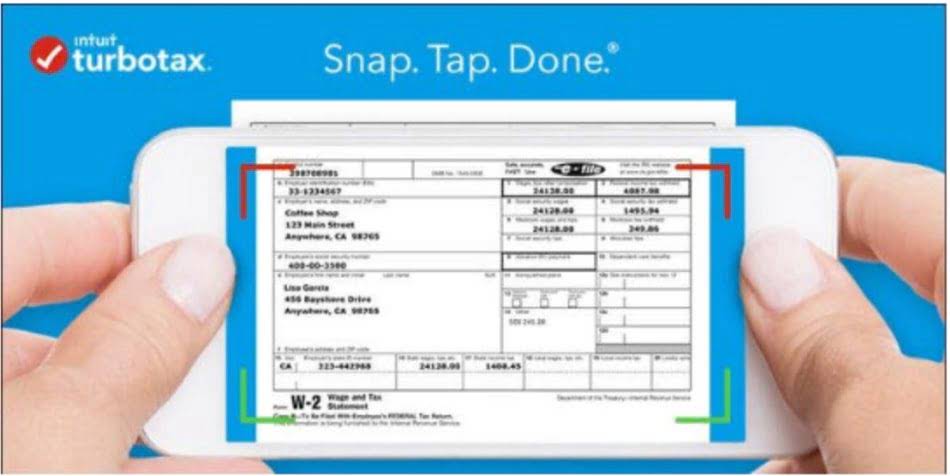Assuming you qualify for an Individual Taxpayer Identification Number (and you follow the W-7 form instructions correctly), you should receive an ITIN within seven weeks. But due to potential processing delays, it’s advisable that you add some extra wiggle room. This is especially true if you’re mailing your ITIN application to the U.S. from overseas as an expat or non-resident. They might be used to file taxes, receive Social Security benefits, apply for credit or loans, open a bank account, and receive other government benefits. While the ITIN application or renewal process can be done with any of our tax pros, using a Certified Acceptance Agent (CAA) makes the process a bit easier. With this service, offered at certain participating offices, the CAA will verify your supporting documents90Go to disclaimer for more details.
- Simply book an appointment, and make sure you bring the correct documents (more on this below).
- That’s where an Individual Taxpayer Identification Number (ITIN) comes in.
- It’s always recommended to check the latest version of the form and instructions in the official IRS website to make sure you have the most updated information.
- If you have or are eligible to obtain a social security number, you are not eligible for an ITIN.
- With that in mind, let’s go over a general apartment hunting timeline.
- She learned to manage her money the hard way after moving to New York City and living paycheck to paycheck for years.
During normal times, the best way to get an ITIN quickly, inside the tax season (January to April 15), is through a Certified Acceptance Agent (CAA). To learn about our professional expat tax preparation services, schedule a free consultation with us today. CAA is a person who is TRAINED and AUTHORIZED BY THE IRS to help non-U.S. To apply for or renew an ITIN, you’ll need to fill out IRS Form W-7. If your ITIN does expire, you’ll need to renew it using form W-7.
How to Renew Your ITIN Number? ITIN Renewal 2020
The taxpayer Bill of Rights is grouped into 10 easy to understand categories outlining the taxpayer rights and protections embedded in the tax code. A taxpayer who was experiencing a family emergency and needed to travel out of the country with his… When you are renewing your ITIN you will receive Notice CP565 to let you know it is renewed and your previously assigned ITIN will remain the same. ITINs are valid for five years, however if the ITIN is not used at least once in the previous three-year period it will expire. Therefore, ITINs not used in the tax years 2019, 2020, or 2021 will have expired on 31 December 2022. See more information on how to apply for your ITIN from outside the US here.
A notarized document is one that the taxpayer provides to a public notary who bears witness to the signing of the official document and affixes a seal assuring that the document is legitimate. Dependents of U.S. military personnel can submit original documents, certified copies or notarized copies of identification documents. If they can’t get an SSN, the IRS says spouses or dependents of nonresident or resident aliens also typically need ITINs. That’s because they might either have to file their own federal tax returns or be identified on the nonresident or resident tax returns. If you need to renew your ITIN, you’ll follow the same process as applying for a new ITIN.
This allows you to avoid mailing your original documents, or certified copies, to the IRS. Many applicants have reported the IRS lost their passports or other valuable and hard-to-replace identification documents. Consider getting certified copies or using one of the application methods listed below, rather than mailing original identification documents to the IRS. Along with your W-7 Form and attached tax return, you must include documentation proving your identity and foreign status. Apply for an ITIN in-person using the services of an IRS-authorized Certifying Acceptance Agent. This will prevent you from having to mail your proof of identity and foreign status documents.
You can file via Form W-7 with your federal tax return during tax season between January and April or any time you have a reporting requirement. If you’d rather not visit a CAA or TAC in person, you can simply download, print, and then mail a completed W-7 form. You’ll need to include original or certified copies of documents proving your identity. We also recommend checking on the IRS site for the latest ITIN information. The IRS requires anyone who prepares or assists in preparing federal tax returns for compensation to have a PTIN. Tax preparers must put their PTIN numbers on clients’ tax returns.
More In File
LITCs represent individuals whose income is below a certain level and who need to resolve tax problems with the IRS. LITCs can represent taxpayers in audits, appeals, and tax collection disputes before the IRS and in court. In addition, LITCs can provide information about taxpayer rights and responsibilities in different languages for individuals who speak English as a second language.
How to Get Individual Tax Identification Number (ITIN number)
This will make the unpacking process more straightforward and less stressful. Preparing your application documents early ensures there’ll be less of a chance you forget to enter a critical piece of info that delays the application. Consider keeping your application documents in a safe place, like a lockbox, until you need to use them. They will arrange all of your items (aside from any items they don’t agree to move due to the reasons outlined above) in your new apartment—all you have to do is tell them where you’d like everything to go. It takes about a month to line up the details and move into an apartment based on how organized you are with your documentation, as well as other factors like packing, scheduling movers, buying furniture, and more. On sites like Realtor.com®, you can harness the power of a filtered search page to get ultra-specific on your ideal apartment to rent.
Applicants are permitted to include a prepaid Express Mail or courier envelope for faster return delivery of their documents. The IRS will then return the documents in the envelope provided by the applicant. As previously mentioned, you need to file Form W-7 to apply for your ITIN. You can apply for your ITIN number at the same time you file federal taxes with the IRS. If you choose to do so, you would complete your U.S. tax return and attach your W-7 along with the other documents and send it to the IRS. You can file Form W-7, Application for IRS Individual Taxpayer Identification Number (ITIN), with your federal income tax return.
If you must send original documents, you can send the IRS a prepaid express envelope with your application to have them returned faster. A current passport would meet all these requirements and is the only document you can submit on its own. If you are an organization or educational institution looking for a streamlined approach to applying for ITINs for your nonresident population, then Sprintax Calculus can help to achieve this.
Q19: What will be the status of the return on “Where’s my refund?”, if the return is filed with an expired ITIN?
Search by a variety of factors—including price ranges, status, available move-in dates, proximity to amenities like gyms and on-site laundry, and even pet-friendly properties. Once that’s done, try to view six to eight apartments so that you have plenty of choices. Start apartment hunting no later than two months ahead of your intended move to make time for virtual and in-person tours. Renters are generally advised to look for apartments 60 days before their lease expires. That’s because starting your search too early might not give you an accurate representation of the rental market in the future. With that in mind, let’s go over a general apartment hunting timeline.
To be issued an Individual Taxpayer Identification Number, you need to complete Form W-7, IRS Application for Individual Taxpayer Identification Number. Along with this form, you will need to provide documents proving your foreign alien status and identity. As the name implies, an ITIN is a dedicated tax ID number bookkeeping for auto repair shops that allows individuals to report their earnings, expenses and deductions to the IRS. These unique numbers are reserved for U.S. taxpayers who are unable to obtain a traditional Social Security number. Note, however, that having an ITIN doesn’t necessarily qualify one to work or reside in the United States.
Bank products and services are offered by Pathward, N.A.
All deposit accounts through Pathward are FDIC insured. If you like to learn more about international money transfers or living abroad, explore our blog. You’ll find a selection of helpful and informative insights put together especially for people living and working abroad. Book an appointment at a center within your US state of residence – you’ll find a list of designated centers here.
Once you have gathered all of the necessary information and documentation, you can submit the completed Form W-7 to the IRS, either by mail or through an authorized acceptance agent. It’s always recommended to check the latest version of the form and instructions in the official IRS website to make sure you have the most updated information. Original documents will be returned to the address on record after processing your application. The IRS is currently processing Form W-7s within 11 weeks after receipt.
However, if you mail in your renewal application, you can simply send along a form W-7 with supporting documents—no need to attach a tax return. The IRS requires that you submit original documents along with the W-7 form, so if your means of identification is your passport, that means you could be without it for a prolonged period of time. If you elect to do this, make sure the company is highly reputable. Some tax filing services offer ITIN application assistance for free when you use their paid tax prep services. Finally, on line 6d, select the identification document you are submitting.









